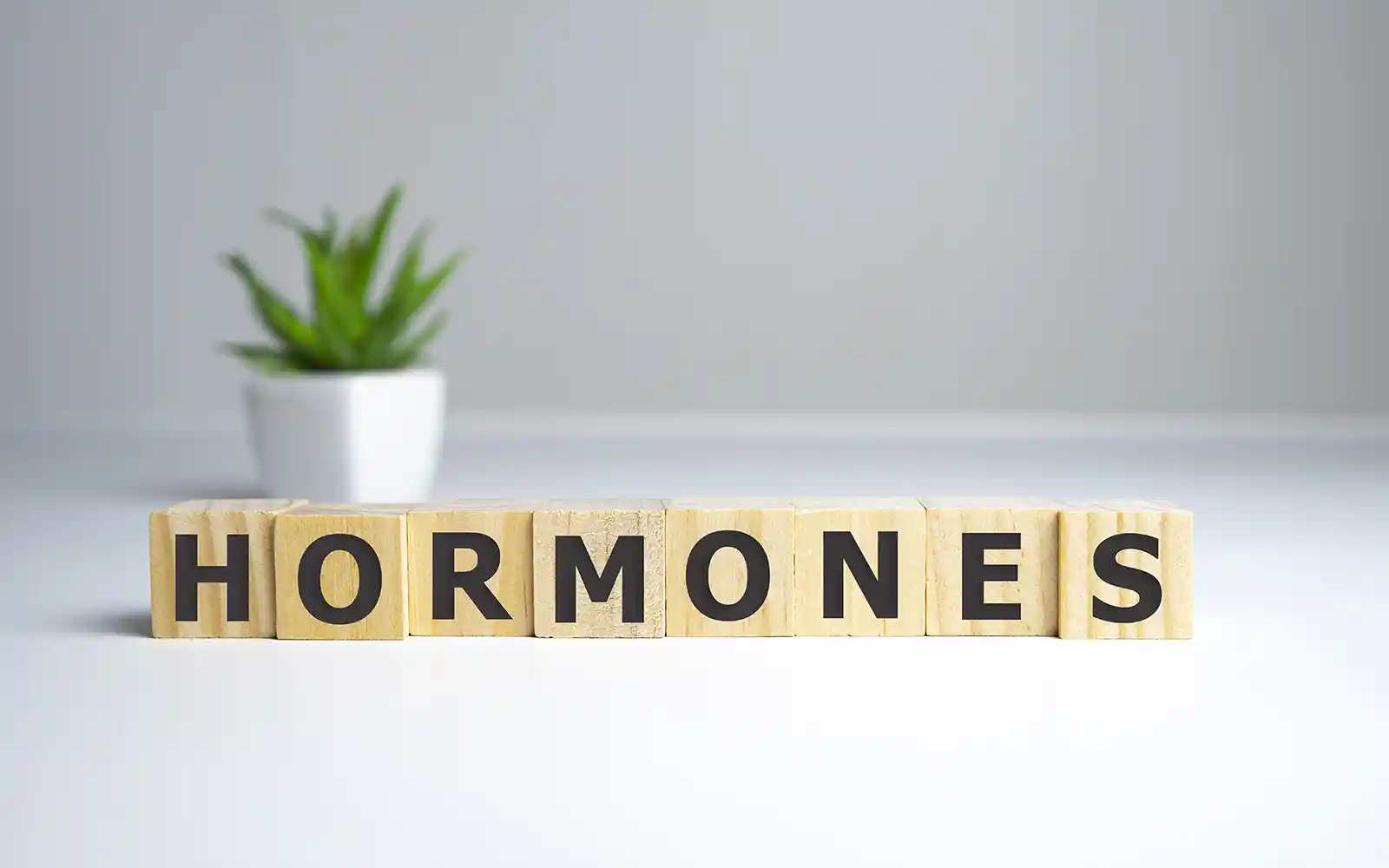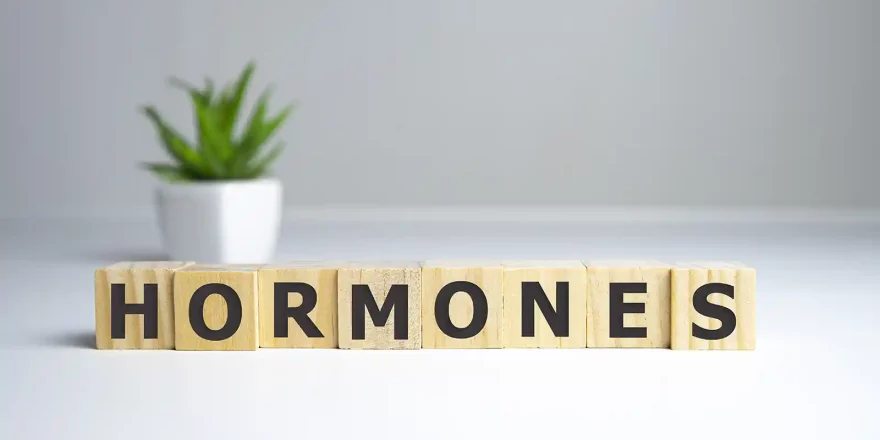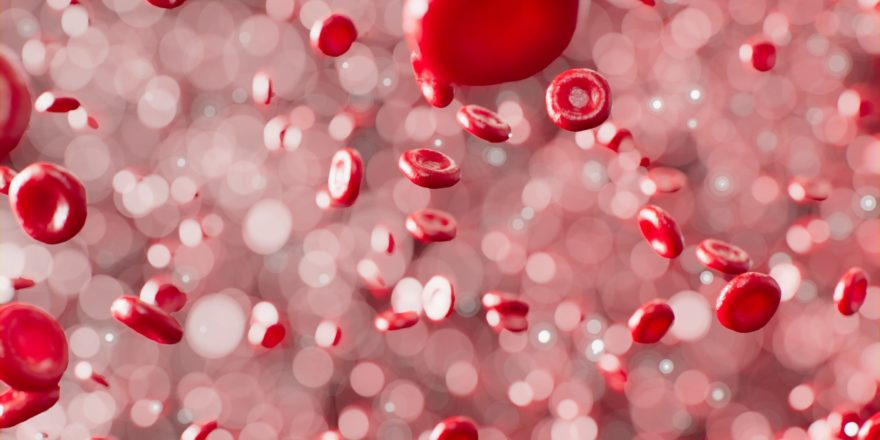Testosterone and progesterone levels and how the body responds to them are crucial elements in endometriosis. The relationship between testosterone and endometriosis occurs at two crucial points in life: when the baby girl is growing in the womb and later as an adult.
- Abnormally low testosterone levels in the womb increase a baby girl’s chances of developing endometriosis as an adult. Testosterone and estrogen oppose each other in many ways and are the most “male” and “female” of the sex hormones.
- Testosterone levels in the womb affect the balance of the Hypothalamus-Pituitary-Ovary axis in a crucial stage of its development, and relatively low testosterone levels increase the number of estrogen receptors in cells.
- Testosterone reduces inflammation (while estrogen increases inflammation), which means that adult women with low testosterone are more prone to inflammation.
- Testosterone levels are also crucial for pain thresholds (for both men and women), and low testosterone worsens pain, while increased testosterone increases resilience to pain.
- Aromatase is an enzyme that turns testosterone into estradiol (E2) (the most potent of the estrogens). Aromatase levels in endometriosis lesions are elevated, which significantly reduces testosterone and raises estradiol levels. In contrast, the normal endometrial tissue of the womb has no aromatase.

Development in the womb
Testosterone is the most significant sex hormone in the womb, and differences in testosterone levels produce measurable variations within and between sexes. i-ii The release of sex hormones in the womb determines the male and female sexual characteristics of the child, and there are considerable variations due to:
- Sex hormone receptors
- Sex hormones the foetus produces from their adrenal glands
- Exposure to the mother’s sex hormones
- Genetic traits
Testosterone is an androgen, and levels are much higher in male foetuses, but it’s also crucial for developing the female Hypothalamus-Pituitary-Ovarian (HPO) axis. Variations in testosterone levels as a foetus have life-long impacts on female health and fertility:
- High foetal testosterone significantly increases the risks of polycystic ovary syndrome (PCOS)
- Low foetal testosterone levels significantly increase the chances of endometriosis
- There are notable differences in patterns of sexual features between women with endometriosis and PCOS:
| Pattern | Endometriosis | PCOS |
|---|---|---|
| Onset of periods | Early | Late |
| Menopause | Early | Late |
| Length of the menstrual cycle | Short | Long |
| Quantity of menstrual blood | Heavy | Light |
| Testosterone level | Low | High |
| Luteinizing hormone (LH) level | Low | High |
| Follicle-stimulating hormone (FSH) level | High | Low |
| Anti-Mullerian hormone (AMH) level | Low | High |
| GnRH secretions from the hypothalamus | Low | High |
The connection to abnormal testosterone levels in the foetal environment, endometriosis and polycystic ovary syndrome (PCOS) in adulthood has been used to predict that people with high rates for one disorder will have lower rates for the other, and studies of ancestral populations support this: iii
| Ancestral Pop. | Endometriosis rates | PCOS rates | Testosterone in pregnancy |
|---|---|---|---|
| Asian | Highest | Lowest | Not mentioned |
| European | Middle | Middle | >- |
| African | Lowest | Highest | Higher than European |
Progesterone and endometriosis
Progesterone is the hormone the corpus luteum releases after ovulation, and it dominates the function of the luteal phase and during pregnancy. If progesterone levels fall below a certain level in the luteal phase (or pregnancy), it triggers the start of a new cycle.
Progesterone has various actions, including crucial roles in reducing inflammation in the endometrium and normal cell cycle regulation (removing unwanted cells). Progesterone is a dynamic and heating hormone that balances estrogen, which is cooler and encourages growth.
Many women with endometriosis have “progesterone resistance”, where progesterone levels may be normal, but the cells don’t respond as they should. The lack of response to progesterone causes increased inflammation, which increases the chances of progesterone resistance and the proliferation of endometriosis tissue. iv
“Hormone Resistance” is a feature of many inflammatory conditions, including diabetes, PCOS and metabolic syndrome (insulin and leptin resistance).
- Chronic inflammation can induce a progesterone-resistant state. v
- Progesterone resistance is a feature of endometriosis lesions. vi
- Treatment with the oral contraceptive pill or progestogens is ineffective in 1/3rd of endometriosis cases due to progesterone resistance. vii

Abnormalities of three sex hormones drive endometriosis, and unfortunately, each increases the chances of the other hormones becoming more imbalanced. The key to reversing the condition is breaking the cycle that feeds the disease, and this involves reducing inflammation, altering immune balance or regulating hormone levels.
i Thankamony A, Pasterski V, Ong KK et al. Anogenital distance as a marker of androgen exposure in humans. Andrology 2016;4:616–25.
ii Swift-Gallant A, Johnson BA, Di Rita V et al. Through a glass, darkly: human digit ratios reflect prenatal androgens, imperfectly. Horm Behav 2020;120:104686.
iii Crespi, Bernard. (2021). Variation among human populations in endometriosis and PCOS A test of the inverse comorbidity model. Evolution, Medicine, and Public Health. 9. 10.1093/emph/eoab029.
iv Patel, BG, Rudnicki, M, Yu, J, Shu, Y, Taylor, RN. Progesterone resistance in endometriosis: origins, consequences and interventions. Acta Obstet Gynecol Scand 2017; 96: 623– 632.
v Patel, BG, Rudnicki, M, Yu, J, Shu, Y, Taylor, RN. Progesterone resistance in endometriosis: origins, consequences and interventions. Acta Obstet Gynecol Scand 2017; 96: 623– 632.
vi Philippe R Koninckx, Anastasia Ussia, Leila Adamyan, Victor Gomel, Dan C Martin, Peritoneal fluid progesterone and progesterone resistance in superficial endometriosis lesions, Human Reproduction, Volume 37, Issue 2, February 2022, Pages 203–211, https://doi.org/10.1093/humrep/deab258
vii Donnez, J.; Dolmans, M.-M. Endometriosis and Medical Therapy: From Progestogens to Progesterone Resistance to GnRH Antagonists: A Review. J. Clin. Med. 2021, 10, 1085. https://doi.org/10.3390/jcm10051085




